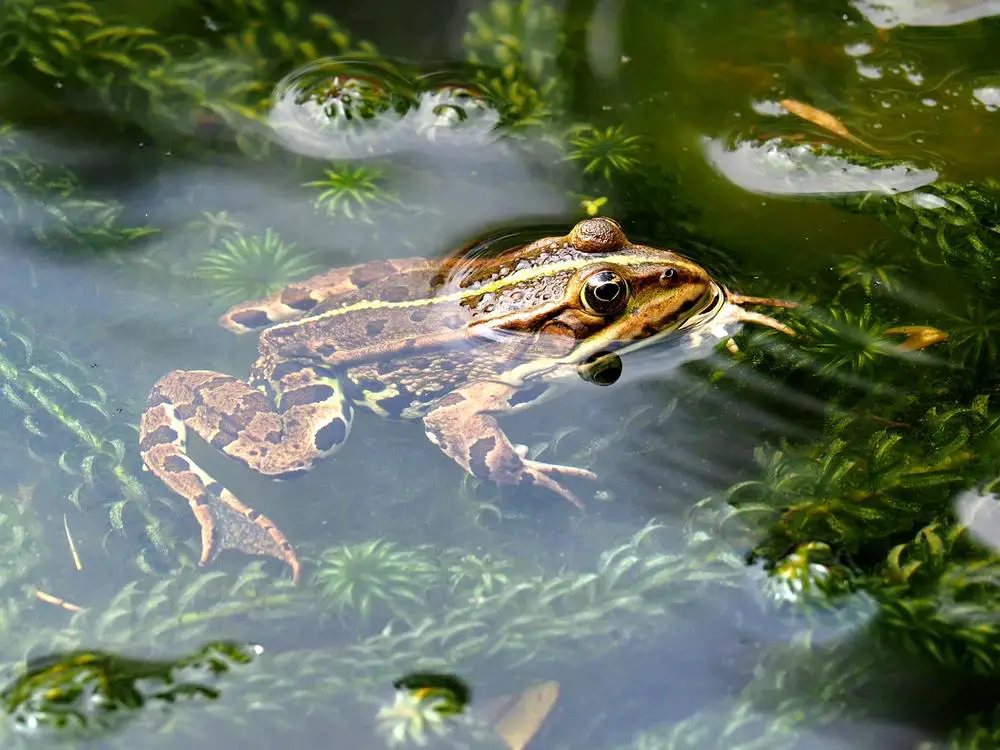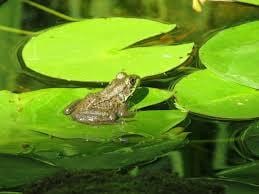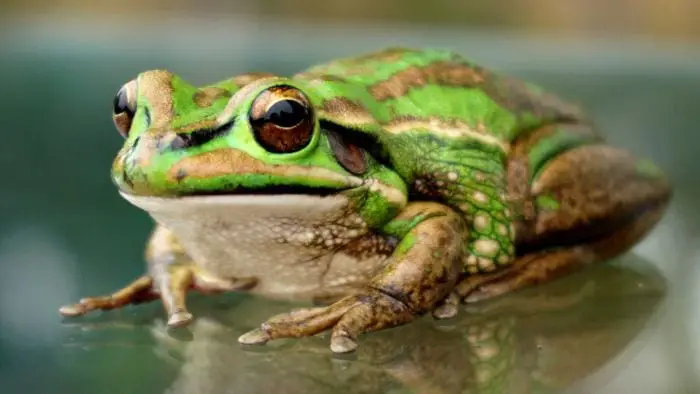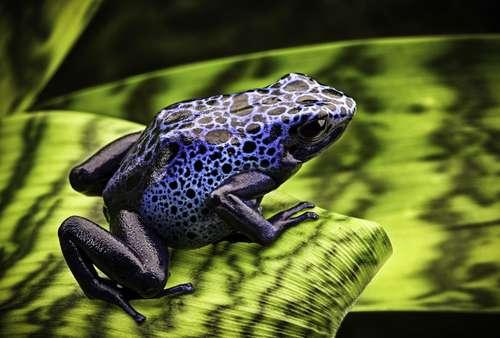Frogs are of any various types of amphibians that belong to the order Anura. In general, the frogs do not have a tail, protruding eyes, strong, webbed hind feet that were basically adapted from them to leap and swim. A frog also possesses a smooth and moist skin. Frogs’ skin is usually sensitive, and if you have this pet, keep it away from salt in order for them to survive.
In this post, you’ll learn more about frogs and why you should keep them away from salt.
Good-to-know Facts About Frogs
Many of the frogs are predominantly aquatic, but some of the frogs live on land, and some are in burrows, and some of the frogs do live in trees. Although many of the frogs have poisonous skin glands, this kind of toxin does not usually provide protection from predators such as birds and snakes. Several species of frogs have bright colors on their underparts that flashes when the frog moves, and it is possibly confusing for the enemies for it as a warning signal of the frog’s toxicity.
Frogs are any member of the diverse and largely carnivorous group of the short-bodied tailless amphibians. Frogs have a long powerful back leg in which that the frog jumps from place to place and that as said, the frogs do not have tails. Frogs are usually greenish-brown in color. Frogs do make a low noise, which is called a croak.
Several frog species are highly tolerant of highly arid conditions, and they can resist salt environments. For instance, the green toad of Central Europe or Bufotes viridis can tolerate extremely high temperatures until 40°C and can withstand up to 50 percent of body water loss.
Behavior

Most frogs cannot tolerate living in a long period in saltwater environments. The blood salinity of frogs is not densely packed in saltwater. That’s why if a frog is put in saltwater, it could lead to dehydration. Also, it could poison the frog, most especially the young ones. Unlike other amphibians with tolerance to saltwater, frogs can die after a couple of hours when placed in saltwater.
Here are the other good-to-know facts about frogs’ behavior:
- When frogs are threatened or attacked, they make a very high pitched noise. It serves as their defense mechanism rather than trying to hop away quickly. Frogs have a very high pitched scream just for them to try and scare their predators if they were picked up or cornered. Frogs spend their lives in places that are near water areas and eat insects, small fish, spiders, and earthworms.
- A frog uses his sticky tongue to catch their food, such as flies or other insects, and they hunt mostly at night time. Frogs are animals that are ectotherms or what we call the cold-blooded animals. The body temperature of frogs depends on the temperature of the surrounding environment.
- By using sounds just like the ribbets and croaks are usually the communication of the frogs. The frogs have a lot of enemies; first in line is the snakes, turtles, bats, raccoons, fish, and of course, even human beings. The different kind of species of the frogs also has different types of protection, just like some of the frogs have some secrete poison from their skin and also some frogs use colors to camouflage while other frogs play dead when they are threatened.
Habitat

Frogs generally live in rainforests just like those that are located in Africa and in South America are where frog habitats that have the most and largest amount of different kinds of frog species in the world. Streams, ponds, lakes, creeks, and rivers are also great habitats for the frogs. Some frogs live in freshwater’s sources of the California mountains are the mountain frogs.
Many studies have found that frogs in saltwater habitats are those habitats that were flooded by seawater. Some examples include mangrove swamps, which are flooded every day by tidal fluctuations, resulting in a saltwater build up in standing water. One of the most well-known frogs to inhabit in this type of environment is the crab-eating frog.
Other kinds of frogs can even live and survive in hot deserts, just like the Australian green frogs and also in icy climates such as the Alaskan wood frogs. The frogs must have water, food, shelter, and of course, a place where it can reproduce in order for them to survive. They used to live near water areas because this is where they drink water, where they can drink water, where they can keep their skin moist and for them to lay their eggs to, of course, reproduce.
Frogs also live in habitats wherein there are lots of insects to eat. The frogs find shelters under the lily pads and plants or even inside the trees and logs. The frogs have cool, unique features that help them to survive in their habitats. Even frogs that used to live in hot deserts have special adaptations that would help them survive with every little water. The frogs are usually in water to relax their body and for them to have comfort.
Keeping Your Frog Away from Salt
Salt can kill your frog. That’s why you need to put your frog away from salt if you do not want them to die. Frogs skin is often sensitive, and if you have a pet like a frog, remember to keep them away from salt in order for them to survive. Frogs die when they are dehydrated.
Reasons Why Salt Is Harmful to Frogs
- The salt causes the increase of the electrical conductivity or the electrolyte balance and sodium channel conductivity of the frogs’ muscles. It leads to the discharge of some of the electrical potentials that signal the muscles of the frogs to twitch.
- The salt burns the skin of the frog when it comes in contact with it. The salt dehydrates the frog. The muscles of the frogs do not really succumb to rigor mortis as quickly as the most warm-bodied animals, which make it possible for the frog’s muscle to move postmodern if the energy is applied to them somehow.
- The salt can injure and can even kill the frogs. Like the slugs, frogs have very moist skin, so whenever they come in contact with salt or in a saltwater solution, it causes a burn like an effect on the frog’s skin.
- A large amount of salt removes the water from the animal’s cells, and it disrupts an internal equilibrium that leads the frogs to extreme dehydration. Even just spraying a saltwater solution on the pavement or even just in the plants around your house can burn the feet and legs of the frogs, and they can even die when they touch the areas with salt.
- Salt cuts the lives of the frogs for it dehydrates the skin of the frogs that lead to the death of the frogs.
Breeding
Frogs lay eggs in water, and their eggs hatch into tadpoles that grow into frogs. Not all frogs follow these exact steps, but there are few rules of thumb about the frog’s reproduction. Egg fertilization in frogs happens outside the female frog’s body instead of on her inside.
The female frog releases the eggs outside, and the male frog releases his superb at the same time. For the sperm to reach the eggs, the male and female frog gets into the mating posture that is called the amplexus. The make frog climbs onto the female frog back, and it clasps its forelegs around the middle of the female frog.
So what happens when there is salt? The most vulnerable stage in a frog’s life is the embryo stage, in which high mortality is usually experienced when a frog is in a salt environment. It is because saltwater disrupts the balanced water and ionic exchange in permeable membranes.
The frogs can stay in amplexus even for hours or even in days as the female frog releases as few as one or even as many several hundred eggs. Many species of frogs are sexually dimorphic, which means that there are differences between the bodies and the colors of the males and the female frogs.
Some of the species the males and the females are very hard to tell apart. Some of the species the male frogs the researchers can use a release call to tell which frogs are male and which frogs are female. The eggs of the frog require moisture in order to develop, and most of the frogs abandon their eggs once the eggs are fertilized. It is best to keep your frogs away from saltwater when they’re still young.
Facts About Frogs and Salt

- There are over 4,700(four-thousand seven-hundred) species, and they can be found on every continent in the world except in Antarctica. Most amphibians generally have discomfort in the presence of salt, but won’t kill them.
- There is a new layer of bone forms every year that a frog goes into hibernation, and you can count these rings to find out the age of the frog. Salt can burn frogs’ toes, causing discomfort.
- Frogs can jump about 20 times their own height, and some frogs can even jump higher. Because salt causes discomfort on the toes of the frogs, their ability to jump can be affected.
- Frogs can come up in all sorts of colors, and the colorful skin of the frog’s skin acts as a warning to their predators that these frogs.
- Frogs shed their skin about once a week after the frog pulls off their old skin or their dead skin that the frog usually eats it. Saltwater can disrupt a frog’s ionic balance inside the body as absorbed through the skin.
- When the frog swallows their prey, they blink, which pushes their eyeballs down on top of their mouth to be able to help them push their food down their throat. Swallowing saltwater or salt causes the frog’s body to be in an imbalanced electrolyte state.
- A group of cattle is known as a herd, and a group of birds is called a flock while a group of frogs is called an army.
- Most of the frogs have their teeth, although they usually only their upper jaw. The teeth of the frogs are used to hold their prey in the place until the frog can now swallow it.
- Goliath frog is the biggest frog in the world, and it lives in West Africa, and it can be measured more than seven pounds as much as a newborn baby.
- The glass frog has translucent skin. That’s why you can see their internal organs and even their bones and even their muscles through their skin. You can even observe their heart beating, and their stomach is digesting their food.
- Waxy monkey species of frog secretes a wax from its neck, and it uses its legs to rub that wax all over its body. The wax that has been secreted prevents the skin of the frog from drying out from the sunlight.
Conclusion
Many frogs and other amphibian species are threatened with different anthropogenic factors, such as habitat loss, pollution, and fragmentation. Freshwater habitats salinization is one factor that causes the decline of amphibian species.



